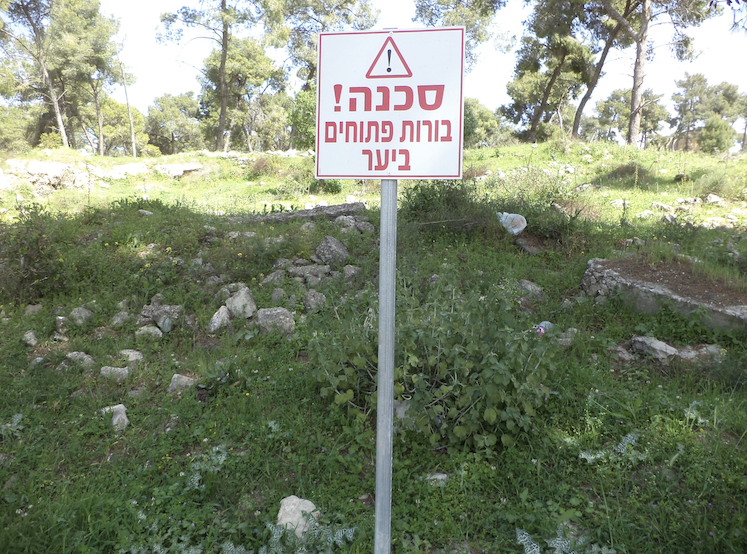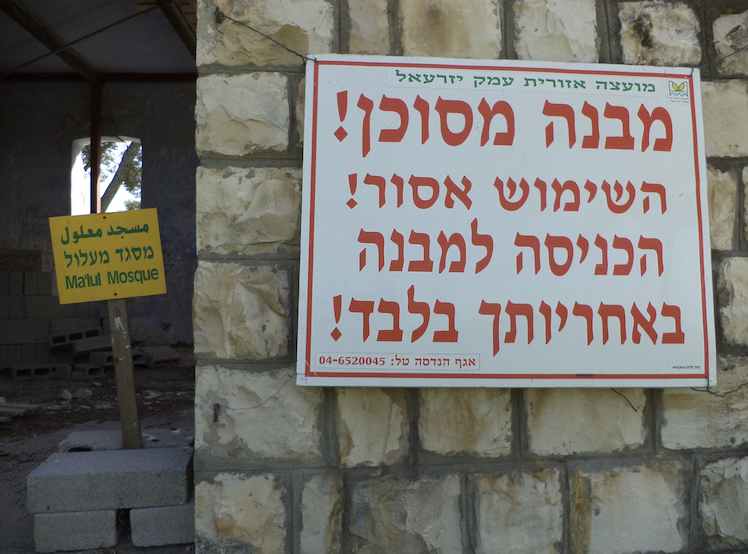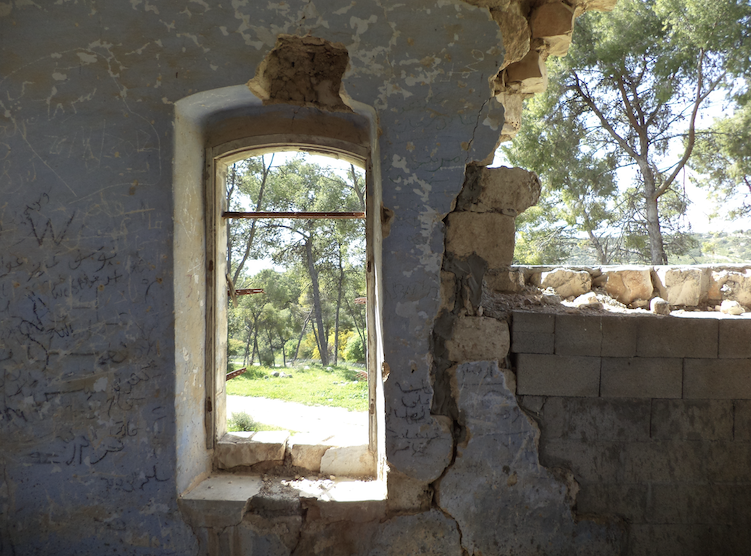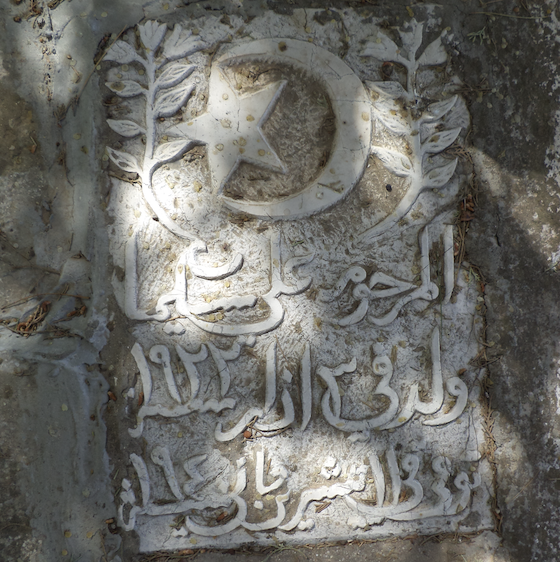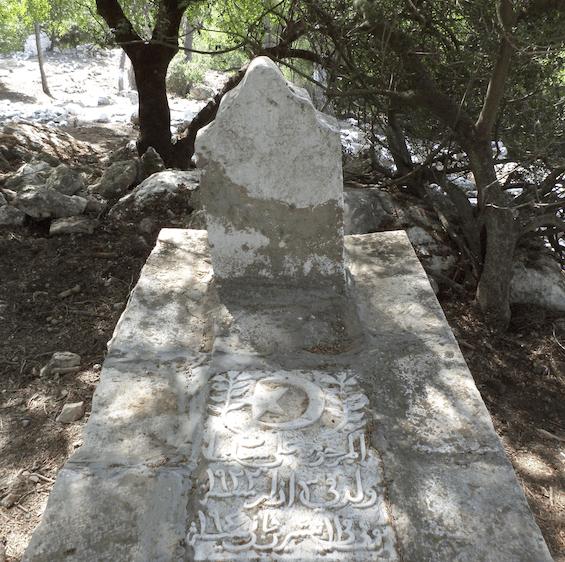Originally published on Ma’an News Agency on April 19, 2014.
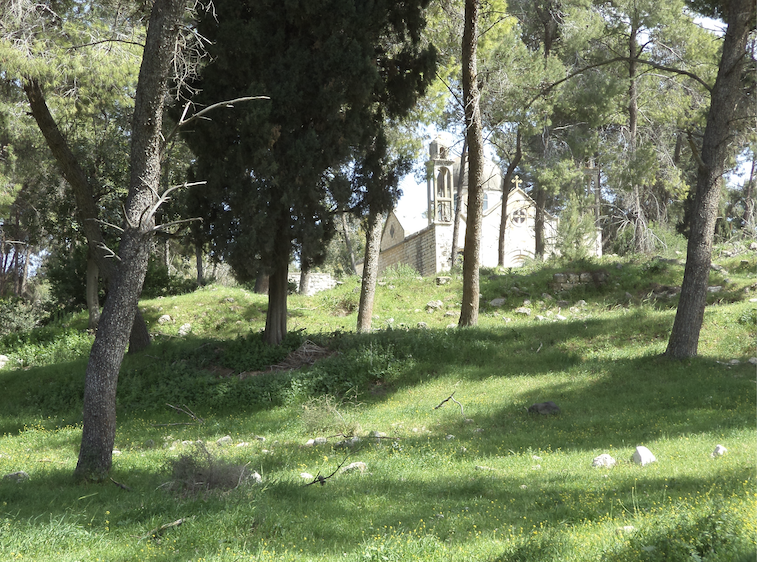
MAALUL (Ma’an) — As thousands of Palestinian Christians descend on Jerusalem for Holy Week festivities, the villagers of Maalul are busy preparing their own Easter celebration for the one day a year Israeli authorities allow them to hold services in their village church.
Their forefathers were expelled from their homes in the village in 1948 by Israeli forces, and today hundreds of their descendants live in nearby Nazareth, Yafa al-Naseriyye, and Haifa. They are forbidden from returning to the village, even though it sits mere kilometers away from their new homes.
But in 2003, more than 50 years after they were forced to flee their homes, villagers returned to Maalul to celebrate Easter in the Catholic Church, one of the few structures that had not been demolished by authorities.
“We used to live here, and we live close by now, so we decided it was time to visit the sacred places of our village,” Amin Jeraisy, one of the organizers of the Easter celebrations, told Ma’an.
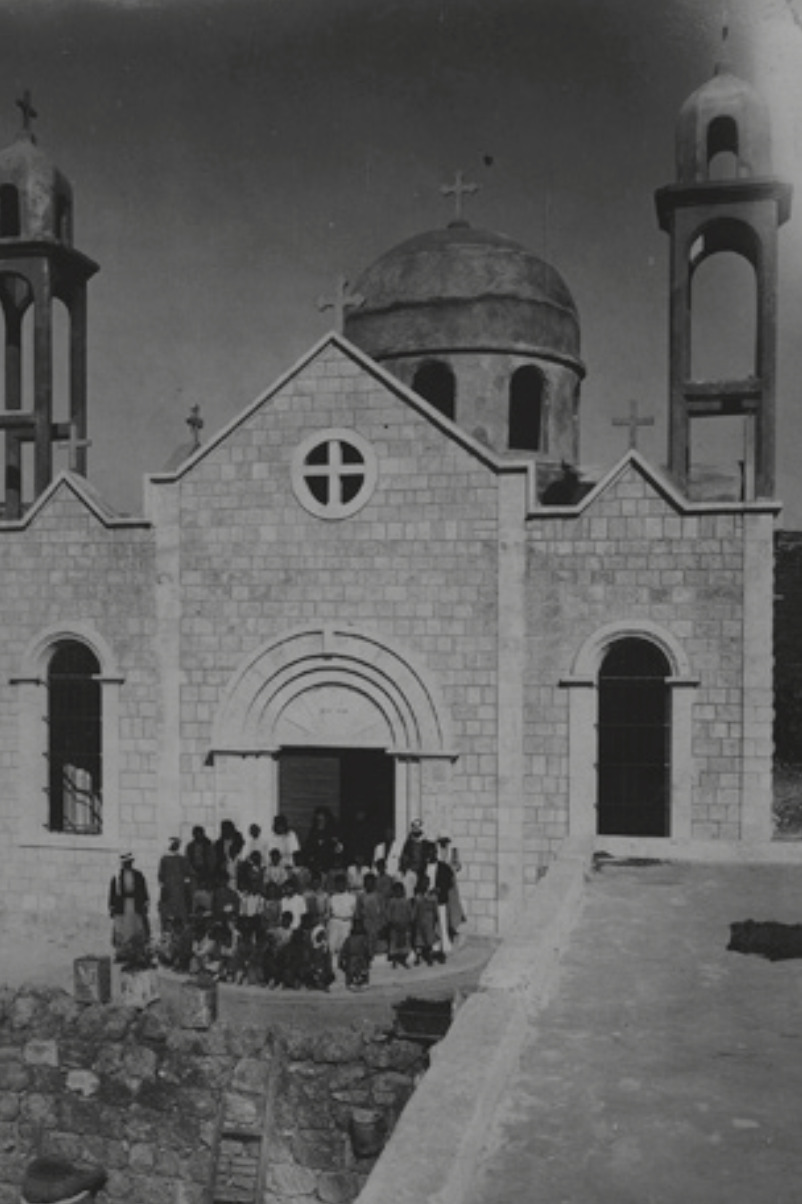
The vast majority of the village’s homes have been bulldozed, their clean-cut stones now collected in haphazard piles across the gently rolling hill that once was home to 800 people.But at the peak of the small hill stand two churches — one Catholic and one Greek Orthodox — while a humble mosque sits in a small valley down below, beside the Christian and Muslim cemeteries.
“The area is open, so we went to pray there in the church,” Jeraisy said of the first year they began organizing Easter celebrations in the village.
“The Muslim community of Maalul also came then and prayed at the mosque.”
Since then, villagers have come back on a yearly basis to hold services here, and more than 800 attended last time, he said.
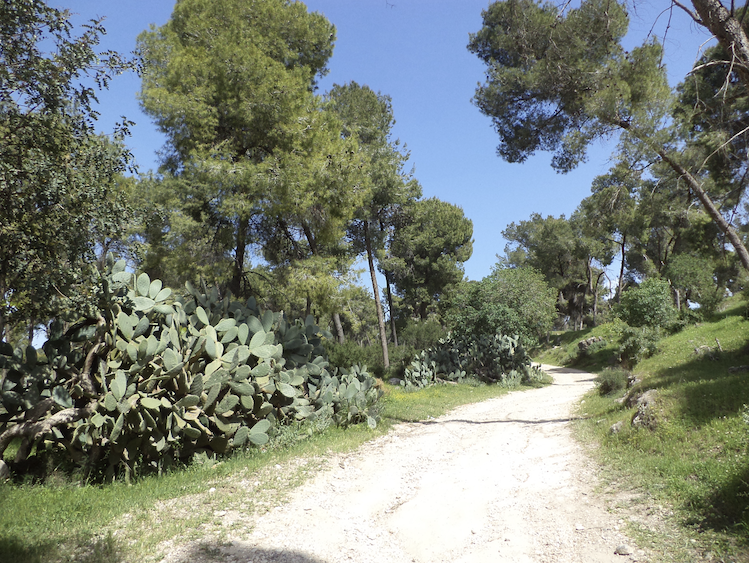

Prior to that Easter, Israeli authorities had allowed villagers to return once a year to the village. In a cruel twist, however, the villagers were given permission only to come on Israeli Independence Day — the day that for Palestinians marks the forcible expulsion of 750,000 people from their homes in what they refer to as the Nakba, or “catastrophe.”
“This is our wounded village of Maalul … and these are our sacred places, the sacred places of our parents and our grandparents,” Jeraisy told Ma’an.
Although most Palestinian refugees were forced to flee into Lebanon, Syria, the West Bank, Gaza, and Jordan, tens of thousands managed to remain inside the borders of the newly-established state. Like the villagers of Maalul, these refugees found themselves living only a few kilometers away from their old homes, yet forbidden from returning.
For decades, Israeli authorities have kept strict watch over the more than 400 Palestinian villages that were forcibly depopulated in 1948.The vast majority were systematically demolished in the 1950s, part of an effort to ensure that the refugees not be allowed to exercise their right to return to their homes.
Although most of Maalul’s buildings were destroyed, the churches and mosque remained standing, though for years they were used to house animals belonging to a nearby kibbutz that was built beside the village.
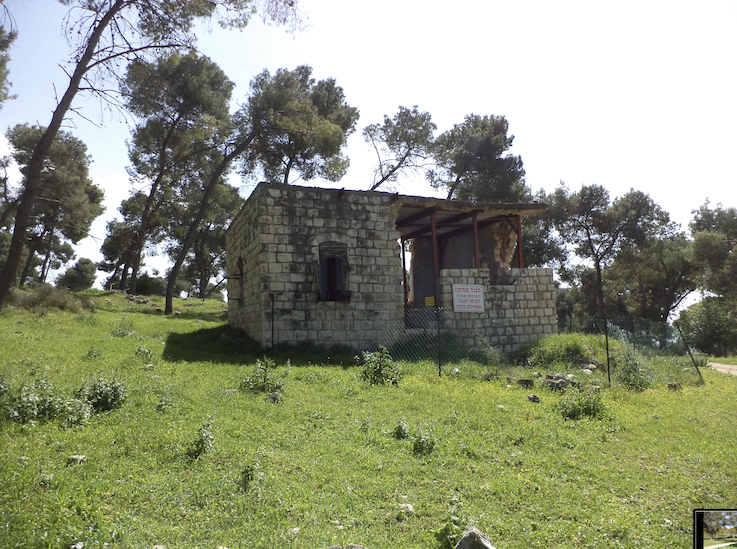
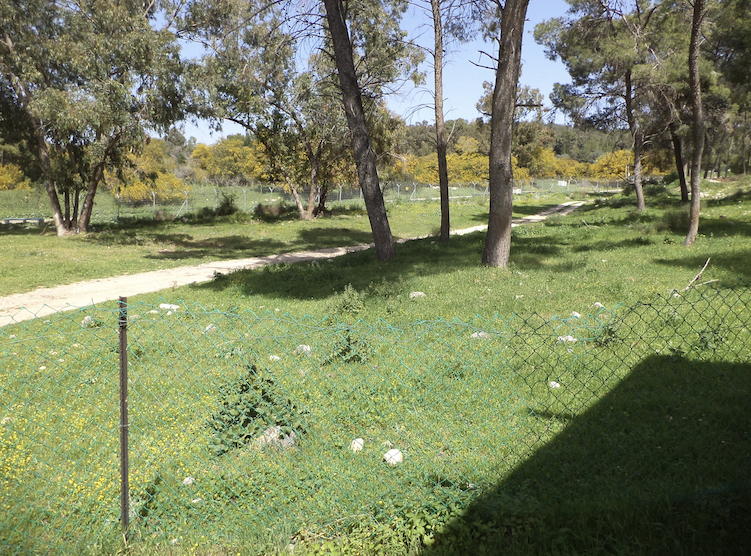
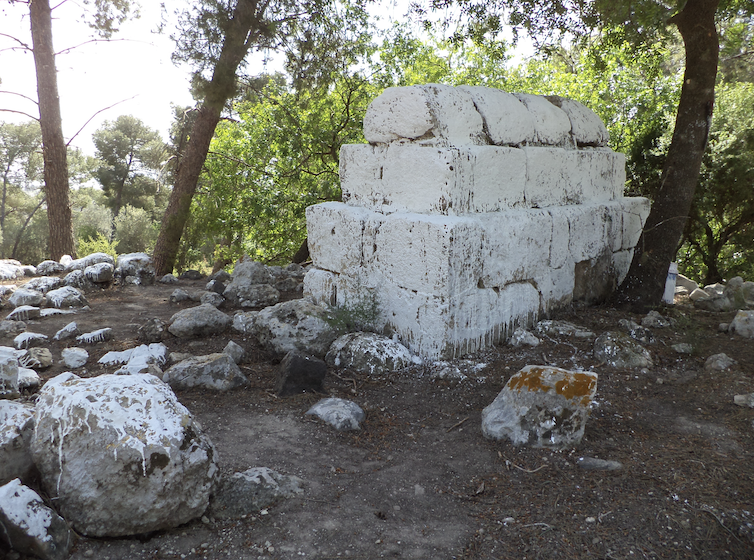
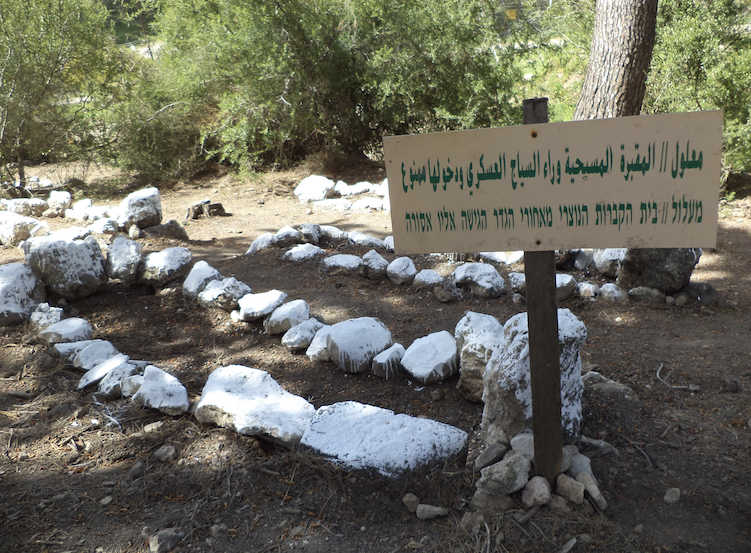
The fence of a military base today loops around the village, annexing the Christian cemetery while dogs keep close watch near the churches.
Jeraisy told Ma’an that when they first began returning, “soldiers used to come to bother us, but now they don’t because it has been turned into a tourist site.”
The Jewish National Fund — which was given the village lands after they were confiscated by the state of Israel — has established a large park over area, part of a systematic effort to build parks in the area of destroyed Palestinian villages.
As a result, government signs mark the ancient Roman ruins near the area and outline trails for bikers, but ignore the Palestinian holy places, cemeteries, and homes that are hiding in plain sight.
In recent years, activists from the village as well as members of Israeli Nakba remembrance organization Zochrot have erected signs in the area to identify the village and its landmarks.
Although banned from rebuilding or engaging major reconstruction efforts, villagers have managed to conduct repairs and renovations on the churches and mosque in order to make them suitable for worship.
These efforts, however, have not gone unopposed. In addition to harassment from the local military base, villagers have faced violent attacks by vigilantes, most recently in 2010, when unknown assailants demolished a part of the southern wall of the mosque.
Despite this, the villagers of Maalul are steadfast in their desire to return to their village and remember the lives torn apart by the havoc wreaked by Israeli forces.
“When they came in 1948, they kicked everyone out in a matter of 72 hours,” Jeraisy said.
“At the very least, it is our duty to come here and visit this place, and to tell the world what happened here.”
